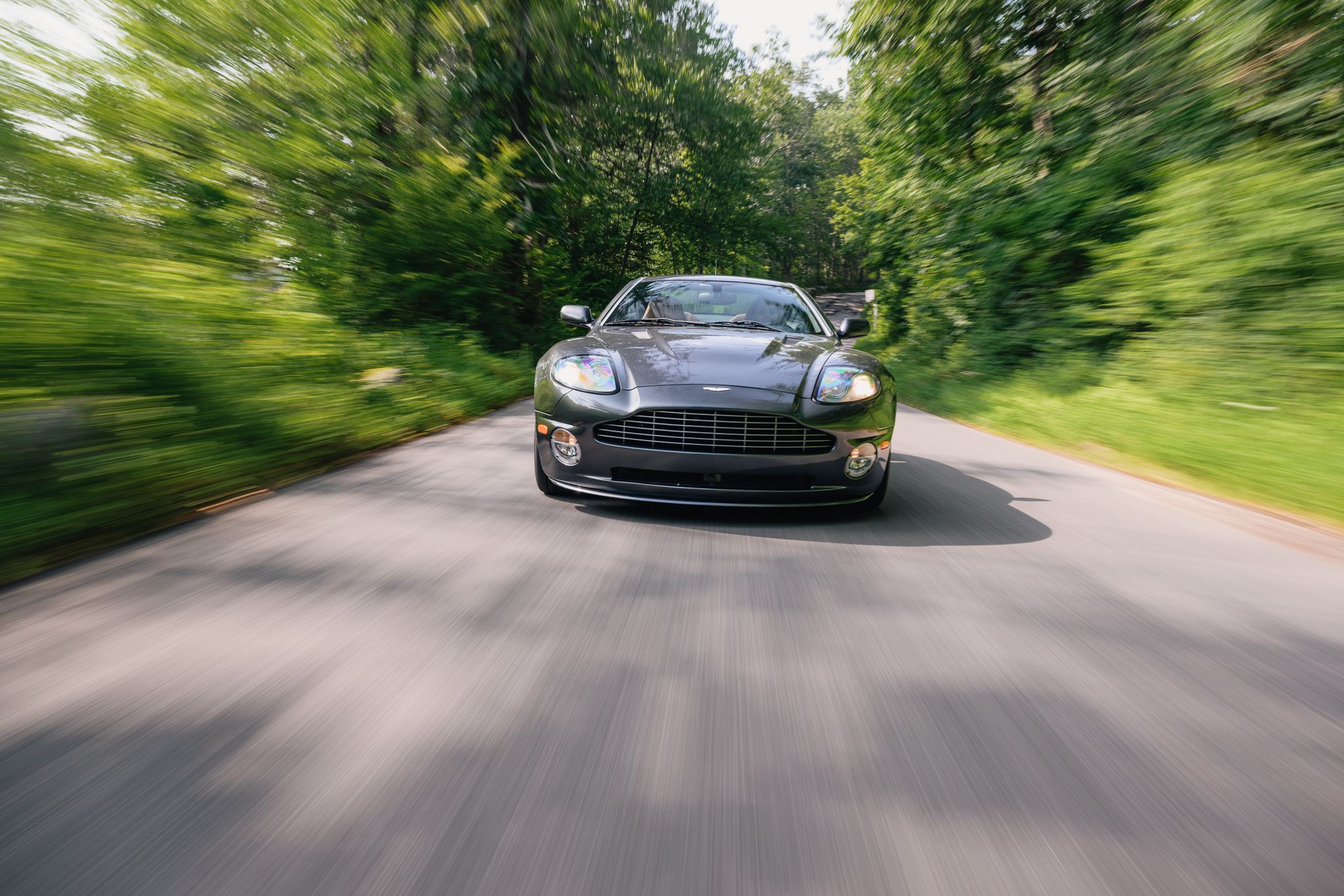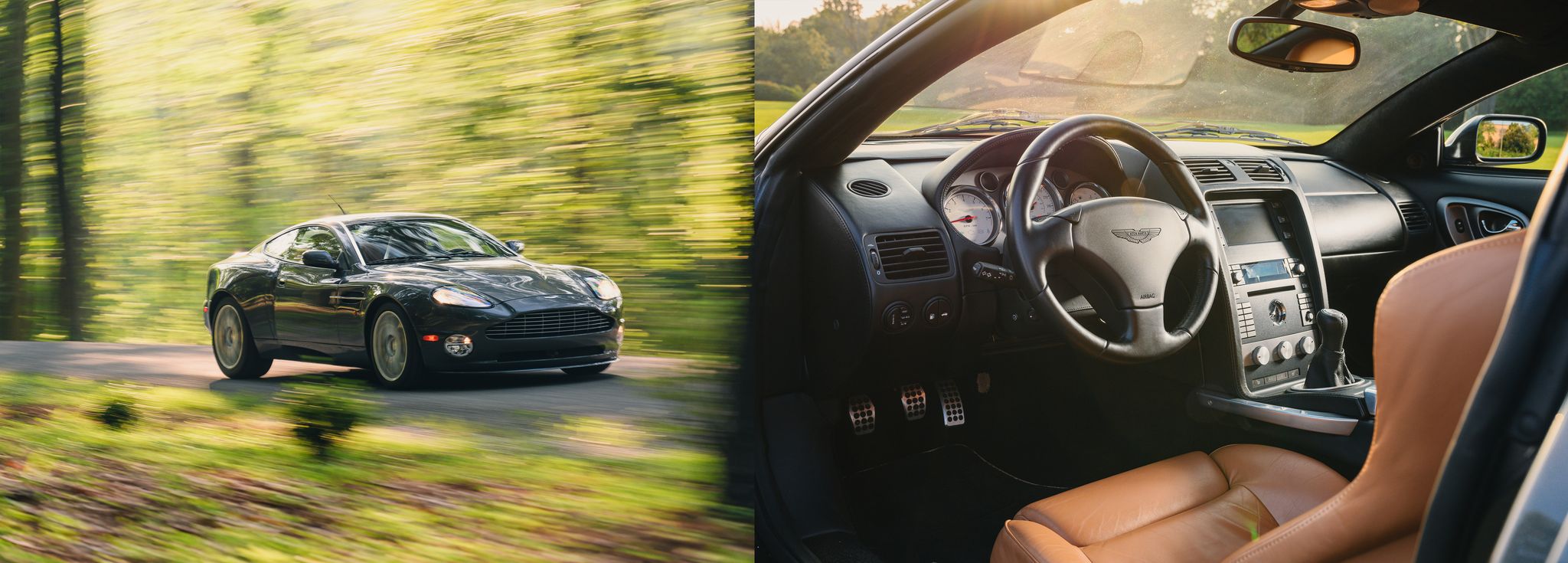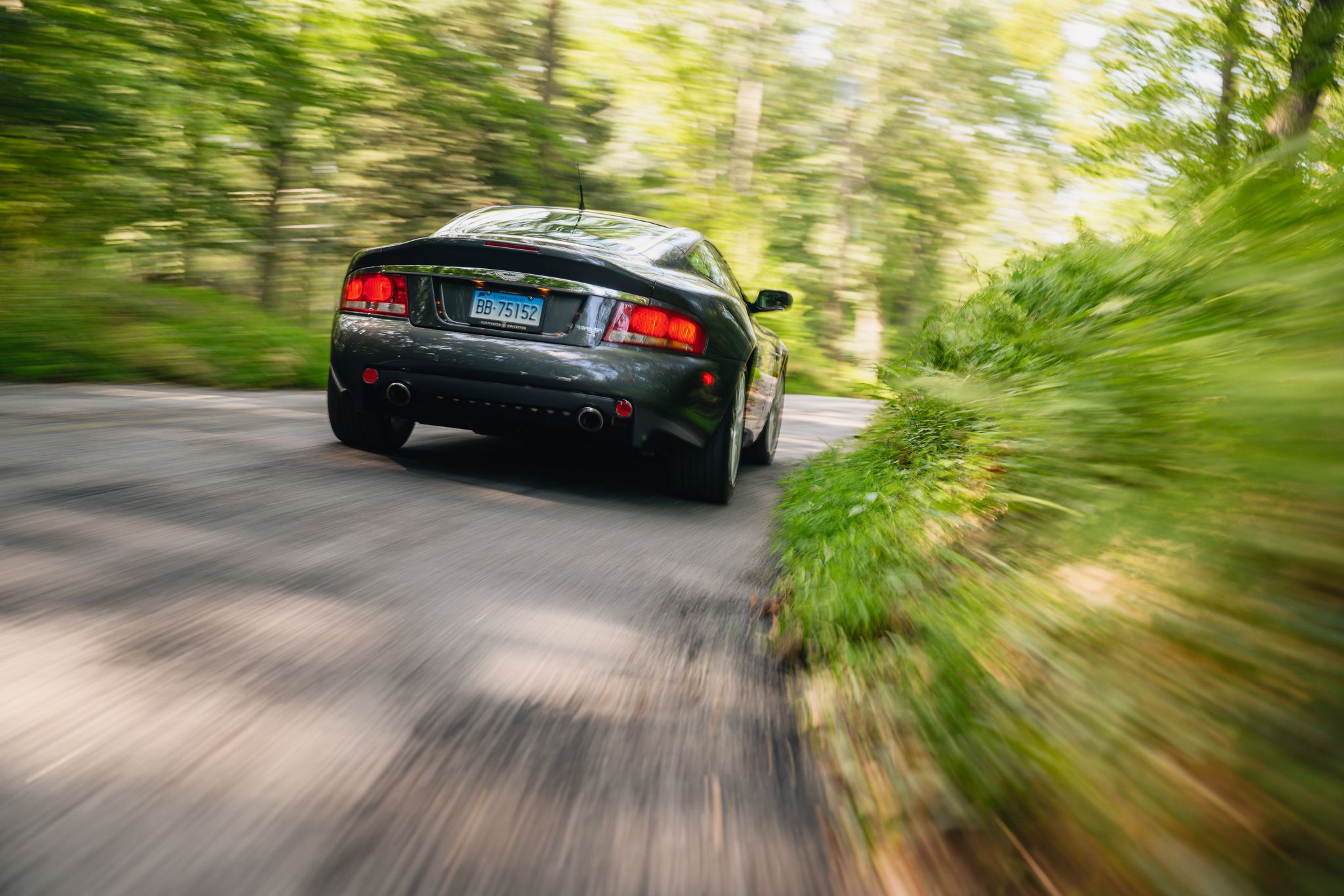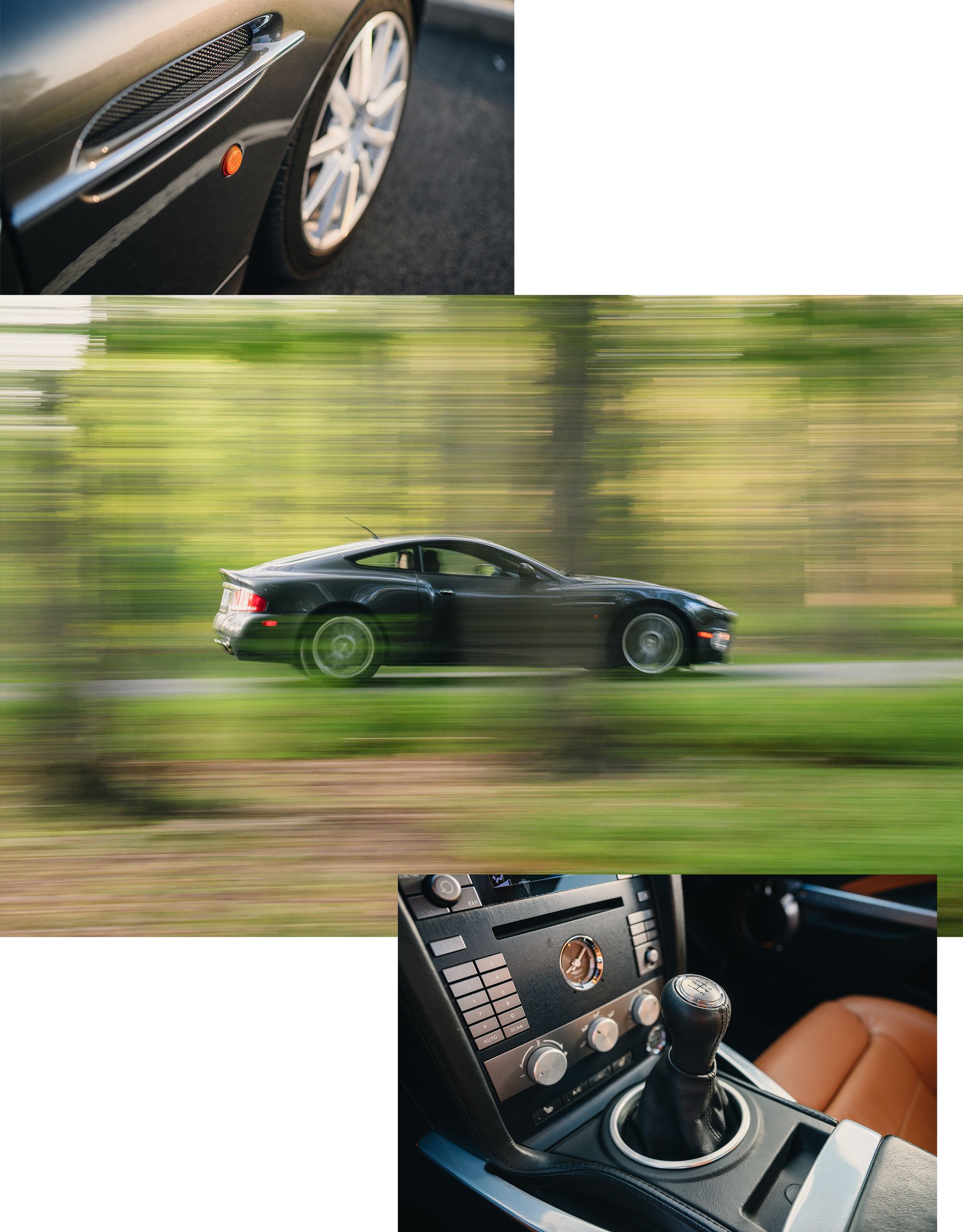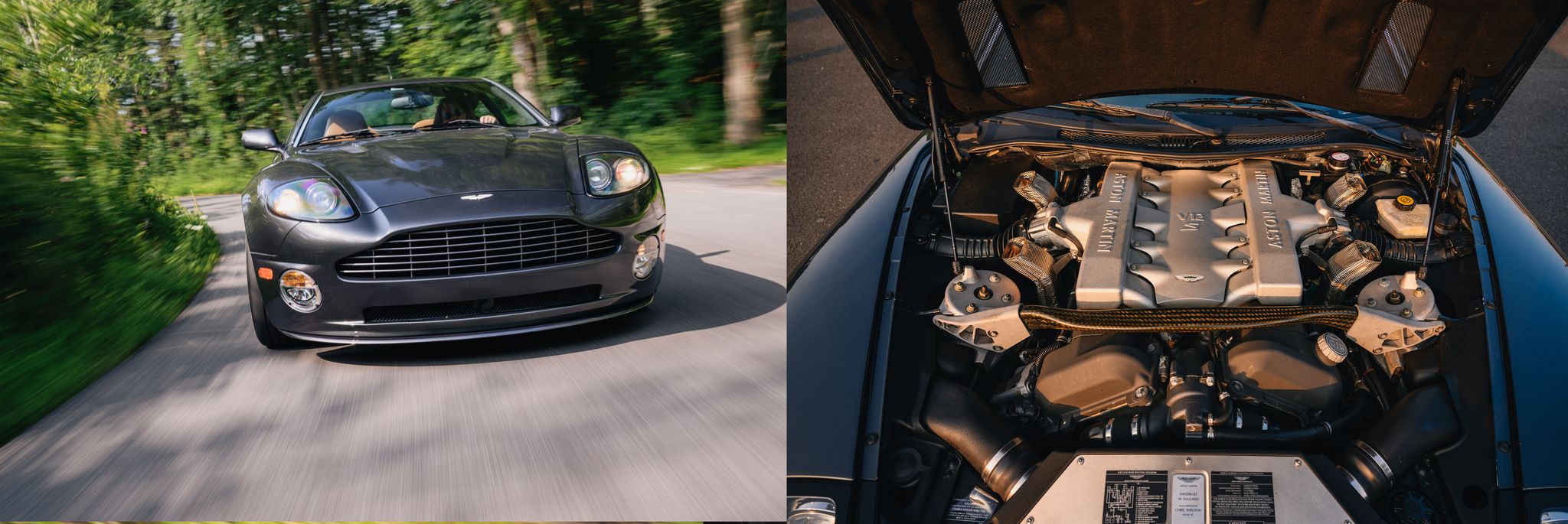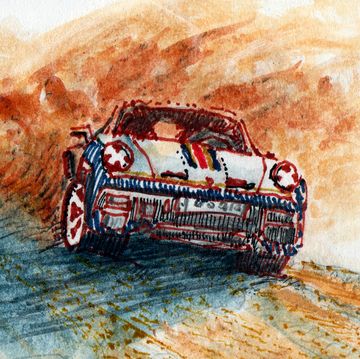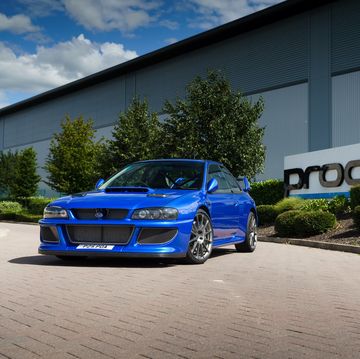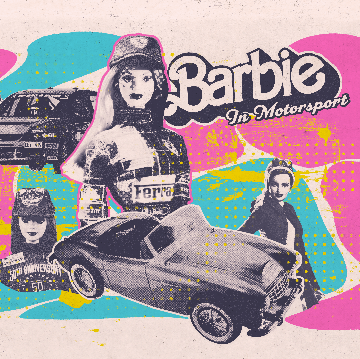Whether you love the Aston Martin Vanquish of the early aughts will depend on what you expect it to be. If you expect a front-engine supercar to compete with the likes of the Ferrari 575, you’ll be disappointed. If you expect a smooth, comfortable, laid back cruiser, you’ll be ecstatic.
The Vanquish is not a supercar. It’s a cushy grand tourer, through and through. Heavy and soft, it could never keep up with the epically quick Ferraris of its time. It only takes a few minutes behind the wheel to realize the Vanquish was never designed to on-limit handling or track test comparisons. It’s easy-going and relaxing. The platonic ideal of what a front-engine Aston Martin GT should be.
Time has been kind to the Vanquish, mostly. Design-wise, it remains one of the great modern Astons. The proportions are perfect, with elegant lines that teeter beautifully between stunning and subdued. The striking rear bulges that start at the door and rest over the back wheels mark the Vanquish’s muscular undertones, but somehow don’t upset any of the overarching lines—something only Aston designers could pull off. This one, painted in fitting Meteorite Silver, is currently offered for sale via The Cultivated Collector, a dealership in New Canaan, Connecticut.
The Vanquish was never able to deliver the supercar experience its original quarter-million price tag first promised back in 2001, but the car is an exceedingly enjoyable thing to drive in 2023. At 4150 pounds it’s not exactly nimble, but a well-tuned chassis means it doesn’t fall apart when the road ahead gets curvy. The brakes are strong and easy to modulate, while the hydraulically assisted steering gives an adequate idea of what the front tires are doing.
The engine, too, has stood the test of time. The dual-overhead cam, 48-valve V-12 displaces 5.9 liters, and made 520 hp at 7000 rpm and 426 lb-ft of torque at 5000 rpm in the Vanquish S when new. From idle there’s plenty of torque to play with, meaning you never have to go above 4000 rpm to get up to speed. But you’ll want to, simply to soak in the sound. While the exhaust isn’t particularly loud, there’s an ever-present, unique tone emanating from the rear, allowing those in the know to identify the car as soon as it's within earshot. Like the rest of the car, the engine is the opposite of high-strung. Happiest between 4/ and 7/10ths, it rewards smooth driving with a smooth, linear delivery, working well with the rest of the car to deliver a low-key, high-class, sporty drive.
The elephant in the room is the transmission getting the V-12’s power to the rear wheels. Aston only ever sold the Vanquish with a single-clutch six-speed automated manual transmission, similar to Ferrari’s F1 gearbox or Lamborghini’s E-Gear. As far as hydraulically operated manuals go, it’s not outwardly terrible (as long as you know how to drive it properly), but it dates the car to the point where it’s become far less desirable for collectors.
Aston Martin itself saw an opportunity to save the Vanquish from becoming trapped in time. In 2005—before the Vanquish ended production—it began to offer a conversion service that would have owners send their cars back to the factory in the United Kingdom to have the hydraulic shifter mechanism attached to the six-speed Tremec swapped out for an old fashioned linkage and a shift knob. The service includes adding a clutch pedal, changes to the ECU, and a rework of the dashboard to accommodate a shift knob, which comes from the V8 Vantage.
A manual doesn’t transform the Vanquish as much as it makes the car a better version of itself. Like the steering and the other pedals, the clutch action is light, making rowing gears a breeze. The shifter itself feels very much like a General Motors product, similar to a six-speed from a Camaro or a Blackwing-badged Cadillac. The changes are short, with softly defined gears. The ratios are long, but you don’t really notice considering the vast amount of torque always at your disposal. If you wanted to, you could easily set off from second gear without your passengers noticing. Like the automated ‘box, the stick shift feels best during leisurely drives through town, rewarding the driver with smooth, unbothered shifts. Sure, you can rush through gears and bomb to redline, but it doesn’t feel very good, because that’s not what this car is about.
Because the Vanquish was never designed to have a stick shift, you’ll notice some things that aren’t ergonomically perfect. The footwell was already pretty tight before the addition of a clutch pedal, so you can imagine just how crowded it feels with a true manual gearbox to actuate. The pedal area was just big enough to use without having to take my size 9 shoes off. The shifter is a bit far back relative to the steering wheel, meaning you’ll have to move your arm farther back to shift into the even-numbered gears than you’re used to.
If you’re on the fence, consider the economic benefits. Aston charges £25,000 (around $32,000 at time of writing) for the swap, plus any shipping costs incurred to get the car to the factory and back. That’s a lot of money, but auction results show you’ll make it back, plus more, when you go to sell. The only thing you’re actually losing is the six weeks away from the car when it goes to get converted. For the manual-obsessed like you and me, it’s a no-brainer.
The manual conversion is a pleasant addition to an already pleasant car. It turns the Vanquish into a more timeless experience, freeing it to age gracefully. It also puts one of the greatest 21st-century Astons on an even higher pedestal, edging it closer to the title of Greatest Aston Martin Ever. While not every owner will feel as passionately as us when it comes to the conversion, it’s fantastic to see Aston offering the choice straight from the factory for purists, as it ensures factory-level engineering, parts quality, and installation. If Ferrari did something like this for the 575, F430, and other F1-equipped cars, it could charge $100,000 or more for the swap and owners would pay it. We hope more manufacturers will get on board, because it’ll ensure the stick shift’s lasting legacy for years to come, and give new life to cars with otherwise tired, old-feeling gearboxes.

Brian Silvestro is Hearst Autos' Lead Deputy Editor for rankings content. He spent over seven years as a staff writer for Road & Track Magazine, and still contributes regularly with car reviews, industry interviews, and more.
He also has a taste for high-mileage, rusted-out projects and amateur endurance racing.
